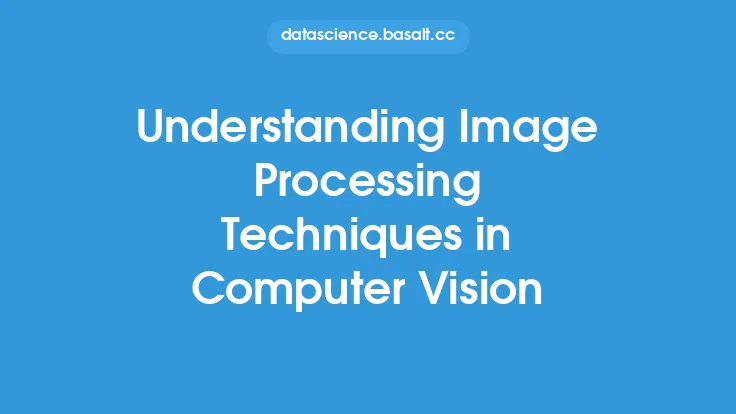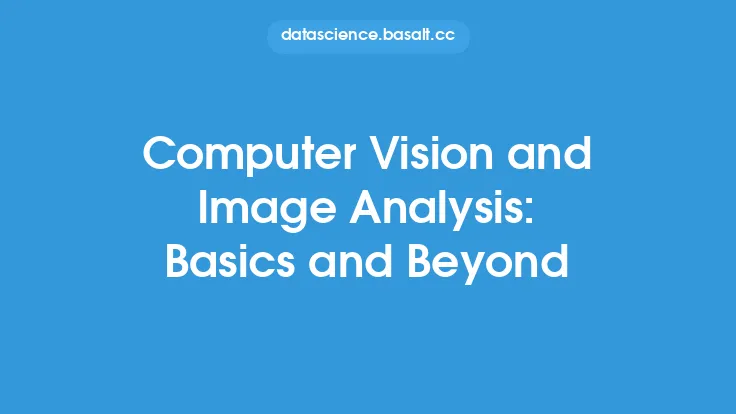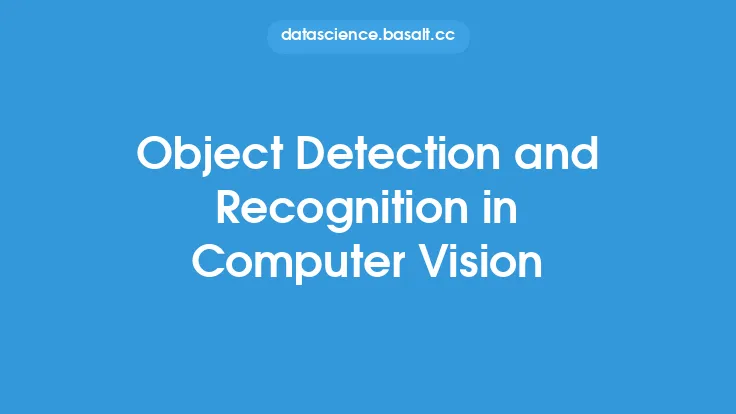Image segmentation and classification are two fundamental concepts in computer vision, a subfield of machine learning that deals with the interpretation and understanding of visual data from images and videos. These concepts are crucial in various applications, including medical imaging, autonomous vehicles, robotics, and surveillance systems. In this article, we will delve into the details of image segmentation and classification, exploring their definitions, techniques, and applications.
Introduction to Image Segmentation
Image segmentation is the process of dividing an image into its constituent parts or objects, allowing for the identification and separation of different regions of interest. This technique is essential in various computer vision applications, as it enables the extraction of meaningful information from images. Image segmentation can be performed using various techniques, including thresholding, edge detection, and region growing. Thresholding involves selecting a threshold value to separate the objects of interest from the background, while edge detection involves identifying the boundaries between different regions. Region growing, on the other hand, involves starting with a seed point and growing the region based on similarity criteria.
Image Segmentation Techniques
There are several image segmentation techniques, each with its strengths and weaknesses. Some of the most common techniques include:
- Thresholding: This technique involves selecting a threshold value to separate the objects of interest from the background. Thresholding can be applied globally or locally, depending on the application.
- Edge detection: This technique involves identifying the boundaries between different regions. Edge detection can be performed using various operators, such as the Sobel operator or the Canny operator.
- Region growing: This technique involves starting with a seed point and growing the region based on similarity criteria. Region growing can be performed using various metrics, such as intensity or texture.
- Clustering: This technique involves grouping similar pixels or regions together. Clustering can be performed using various algorithms, such as k-means or hierarchical clustering.
- Deep learning-based techniques: These techniques involve using deep neural networks to perform image segmentation. Deep learning-based techniques have shown state-of-the-art performance in various image segmentation tasks.
Introduction to Image Classification
Image classification is the process of assigning a label or category to an image based on its content. This technique is essential in various computer vision applications, including image retrieval, object recognition, and scene understanding. Image classification can be performed using various techniques, including traditional machine learning algorithms and deep learning-based techniques. Traditional machine learning algorithms involve extracting features from images and training a classifier to predict the label. Deep learning-based techniques, on the other hand, involve using convolutional neural networks (CNNs) to extract features and predict the label.
Image Classification Techniques
There are several image classification techniques, each with its strengths and weaknesses. Some of the most common techniques include:
- Traditional machine learning algorithms: These algorithms involve extracting features from images and training a classifier to predict the label. Traditional machine learning algorithms include support vector machines (SVMs), k-nearest neighbors (k-NN), and random forests.
- Deep learning-based techniques: These techniques involve using CNNs to extract features and predict the label. Deep learning-based techniques have shown state-of-the-art performance in various image classification tasks.
- Transfer learning: This technique involves using pre-trained CNNs as a starting point for image classification tasks. Transfer learning can significantly improve the performance of image classification models, especially when the training dataset is small.
- Ensemble methods: These methods involve combining the predictions of multiple models to improve the overall performance. Ensemble methods can be used to combine the predictions of traditional machine learning algorithms and deep learning-based techniques.
Applications of Image Segmentation and Classification
Image segmentation and classification have numerous applications in various fields, including:
- Medical imaging: Image segmentation and classification are used in medical imaging to diagnose diseases, such as cancer and cardiovascular disease.
- Autonomous vehicles: Image segmentation and classification are used in autonomous vehicles to detect and recognize objects, such as pedestrians, cars, and road signs.
- Robotics: Image segmentation and classification are used in robotics to detect and recognize objects, such as products on a conveyor belt.
- Surveillance systems: Image segmentation and classification are used in surveillance systems to detect and recognize objects, such as people and vehicles.
- Image retrieval: Image segmentation and classification are used in image retrieval to retrieve images based on their content.
Challenges and Future Directions
Image segmentation and classification are challenging tasks, especially when dealing with complex images and scenes. Some of the challenges include:
- Variability in lighting conditions: Images can be affected by various lighting conditions, such as shadows, highlights, and reflections.
- Variability in pose and orientation: Objects can appear in different poses and orientations, making it challenging to detect and recognize them.
- Occlusion: Objects can be occluded by other objects, making it challenging to detect and recognize them.
- Clutter: Images can be cluttered with multiple objects, making it challenging to detect and recognize individual objects.
- Limited training data: Image segmentation and classification models require large amounts of training data to achieve good performance. However, collecting and annotating large datasets can be time-consuming and expensive.
To address these challenges, researchers are exploring new techniques, such as:
- Using synthetic data to augment real-world datasets
- Using transfer learning to adapt models to new domains and tasks
- Using ensemble methods to combine the predictions of multiple models
- Using attention mechanisms to focus on relevant regions of the image
- Using graph-based methods to model relationships between objects and regions.
Conclusion
Image segmentation and classification are fundamental concepts in computer vision, with numerous applications in various fields. These techniques involve dividing an image into its constituent parts or objects and assigning a label or category to an image based on its content. While there are various techniques for image segmentation and classification, deep learning-based techniques have shown state-of-the-art performance in various tasks. However, there are still challenges to be addressed, such as variability in lighting conditions, pose and orientation, occlusion, clutter, and limited training data. To address these challenges, researchers are exploring new techniques, such as using synthetic data, transfer learning, ensemble methods, attention mechanisms, and graph-based methods. As computer vision continues to evolve, we can expect to see significant advancements in image segmentation and classification, leading to improved performance and new applications in various fields.





